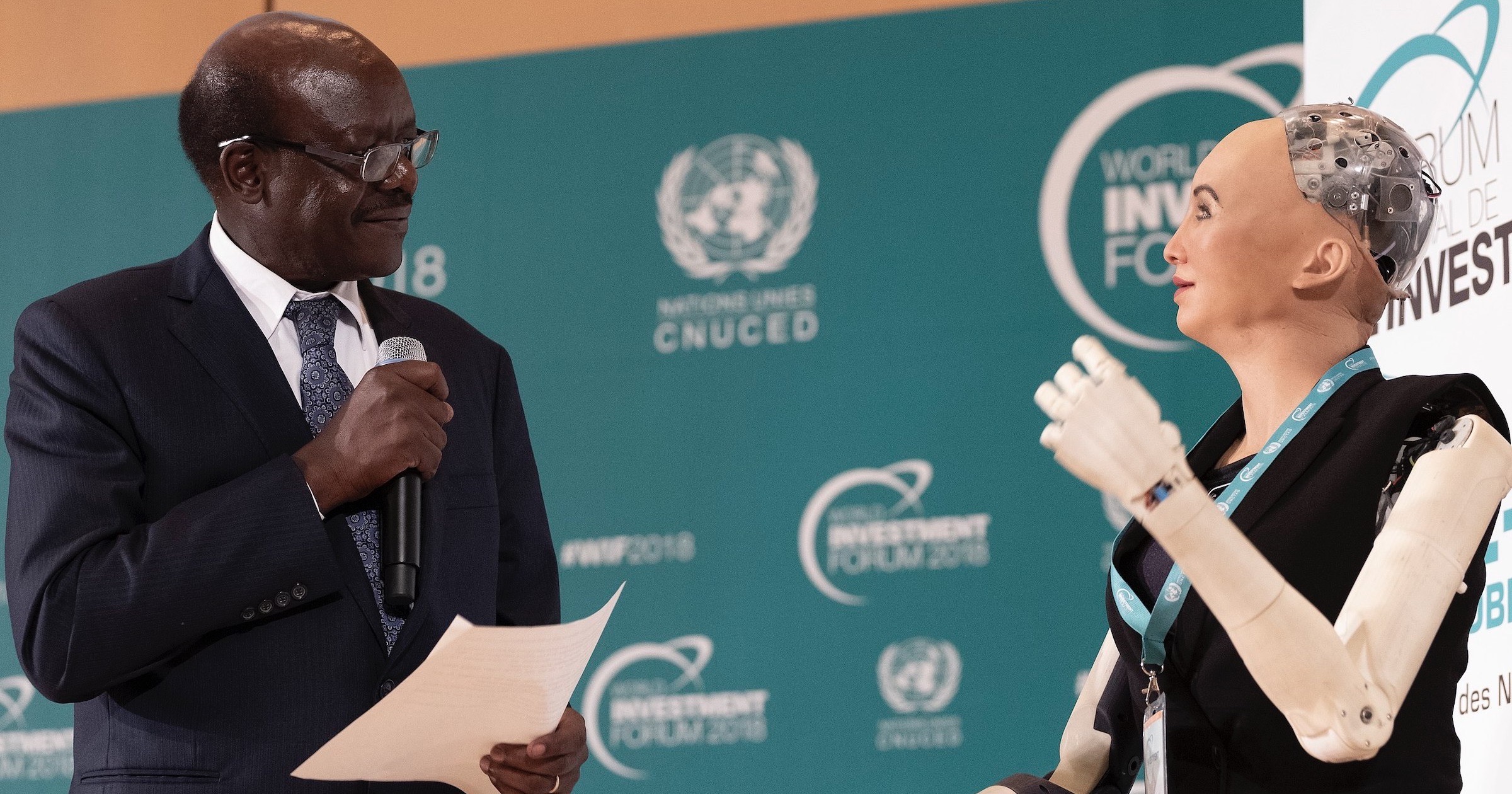 Neuroscience & Mind
Neuroscience & Mind
 News Media
News Media
Hyping Artificial Intelligence with Seductive Optics and the Frankenstein Complex

Editor’s note: We are delighted to present an excerpt from Chapter 6 of the new book Non-Computable You: What You Do that Artificial Intelligence Never Will, by computer engineer Robert J. Marks, director of Discovery Institute’s Bradley Center for Natural and Artificial Intelligence.
Wrapping artificial intelligence (AI) in an impressive physical package can magnify the perceived impact of new technology. Doing so uses seductive optics.
The confusing of AI packaging with AI content was evident in media excitement about a Buddhist robot who delivers messages to the faithful. “The world’s first sutra-chanting android deity, modeled after Kannon the Buddhist Goddess of Mercy, was introduced to the public last week,” the report reads. The robot can “move its eyes, hands, and torso, make human-like gestures during its speech, and brings its hands together in prayer. A camera implanted in the left eye to focus on a subject gives the impression of eye contact.”
Hall of Presidents
Technologically speaking, nothing special is happening here. The messages from the Buddhist robot are pre-recorded and not the product of AI. The mouth movements are synced to the recording. This technology dates back at least to the Disney Hall of Presidents, launched in 1971. All the U.S. Presidents in Disneyland give presentations akin to the Buddhist robot. Their mouths move and they gesture. The technology, dubbed Audio-Animatronics, was trademarked by Disney in 1964.
But the packaging and context made this robot seem special. Monks gathered at the robot’s opening ceremony and performed with “chanting, bowing, drumming, and the ringing of bells.” The robot, named “Mindar,” was designed to look like an androgynous human, with “special features designed to evoke both feminine and masculine qualities…. the plain facial features give room for visitors to use their own imagination in how they’d like the deity to appear.”
Like seductive semantics, also covered in my book Non-Computable You, here we have seductive optics. The AI looks generally human, but also leaves space for people to impose their own preferences.
The media obsession with the Buddhist robot story is due to seductive optics.
Some of the panicky AI-will-take-over-the-world talk grows out of seductive optics — that is, the AI packaging. Author and poet Diane Ackerman confesses, “Artificial intelligence is growing up fast, as are robots whose facial expressions can elicit empathy and make your mirror neurons quiver.”
The Uncanny Valley
A factor contributing to fear of AI is the so-called Frankenstein Complex. The term, coined by science fiction writer Isaac Asimov, originally described the fear of the mechanical man in science fiction of old. Frankenstein refers to Mary Shelley’s 1818 novel Frankenstein, or The Modern Prometheus. A young scientist, Dr. Victor Frankenstein, sews together dead body parts to create a monster. (In the book Frankenstein is the doctor’s last name, but today Frankenstein’s monster is often referred to as simply Frankenstein.)
Thomas Edison first put the story to film in a silent 1910 movie. Some of us are familiar with Boris Karloff’s depiction of the monster in the 1931 motion picture classic Frankenstein. Today’s film monsters are typically a lot scarier than those depicted in 1930s movies with their clunky special effects. But even today, Karloff’s Frankenstein monster makes one’s skin crawl. The question is, why? After all, he moves clumsily in slow motion; even someone on crutches could avoid him. He’s tall, sure, but the smaller, fast-moving, hard-punching Mike Tyson could no doubt take him in the ring. The monster is less dangerous than a bobcat or alligator, yet we get chills just looking at Karloff’s Frankenstein monster, and we don’t when thinking about alligators or bobcats. What’s going on here?
The Frankenstein complex is explained by a related idea dubbed the uncanny valley. The hypothesis is named after a dip in a regression curve. For the most part, and all other things being equal, as an object comes to resemble a human more and more, our reaction to the object becomes increasingly positive. But if the likeness is a near miss, we experience the uncanny valley. Anything not human but that appears very nearly human is scary.
Chatting with Sophia
The Frankenstein complex/uncanny valley contributes to fears of (and fascination with) AI. Consider the chatbot Sophia the Robot. Sophia has its own Facebook page and has been awarded citizenship in Saudi Arabia. Its speech is augmented by facial expressions using small feature changes akin to those used by cartoonists. Sophia’s human-like container, its seductive optics, has little to do with its chatbot AI. (If you want to brave the revenue-generating ads, there are many interesting videos of Sophia on YouTube.)
Sophia is bald and the back of its head is clear plastic that reveals electronics inside its head. The Frankenstein complex/uncanny valley reaction might diminish if Sophia wore a wig, or this might plunge the robot deeper into the uncanny valley, since it still wouldn’t look fully human. I suspect AI optics will get better to the point of being visually indistinguishable from humans when not closely examined. Currently, though, seamless human form representation in robots is not well developed. It’s close enough, however, that marketers of Sophia the Robot and other AI can grab our attention via the uncanny valley. Today more than ever the goal in promotion is to get the attention of the reader and the media. Making things look almost human and, therefore, a little creepy does this.
